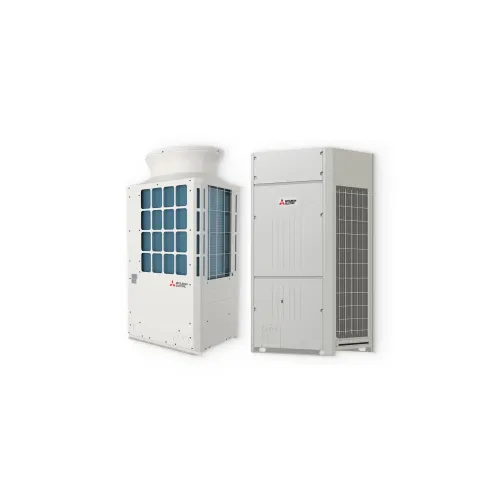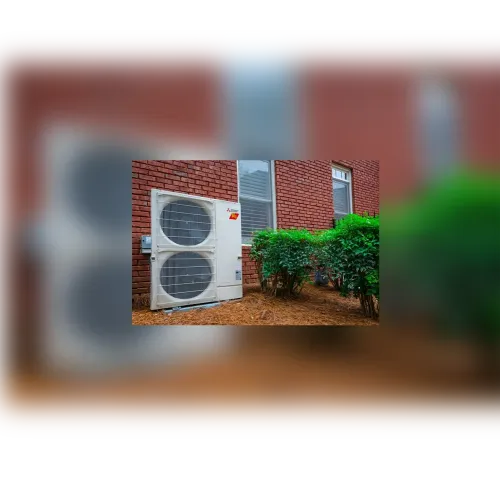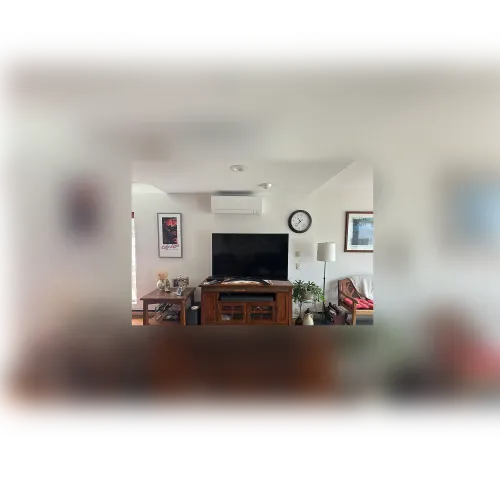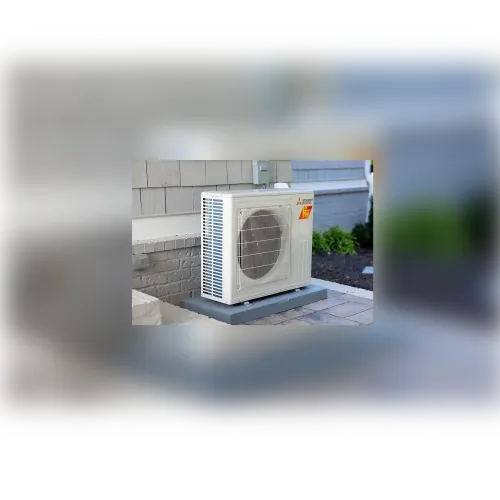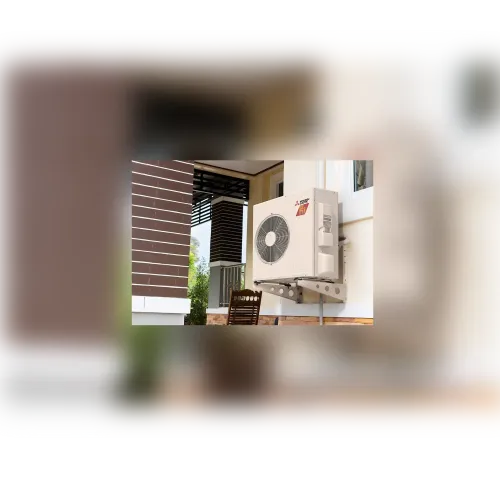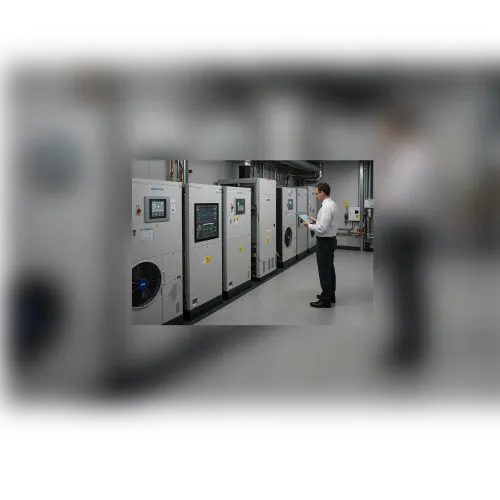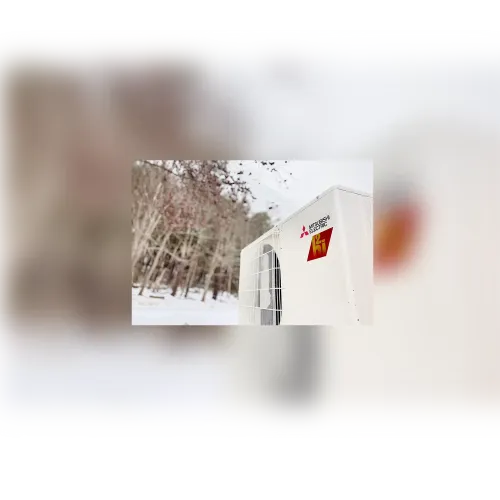The latest in heat pump news
200 articles
Viewing 1-24 of 200 articles
Tips for Attracting Gen Zers to Mechanical Trade CareersZoned HomeWhole House Mini-Split & Heat Pump SystemsWhat are Variable Refrigerant Flow (VRF) HVAC Systems?Tiny House Heating and Air ConditioningSunroom Heating and Air ConditioningShe ShedOil, propane, or gas-heated homeNet Zero HVAC and High Performance HomesHeat Pumps in Extreme Cold ClimatesMETUS Collaborates with SPAN to Accelerate Home Electrification Man CaveIntroducing Sleek Home Controls: kumo touch™How the Inflation Reduction Act Can Save You MoneyHow VRF Technology Helps Future-Proof Buildings?How Do VRF Systems Improve Sustainability?Home OfficeQuiet Heating and Air Conditioner SolutionsMETUS Donates Heat Pump System to Help the Joseph Groh Foundation Improve the Lives of a Texas Family in Need Heating and Air Conditioning for a Home AdditionGarage Heating and AC SystemsHeat Pumps for Boiler-Heated HomesBedroom that’s Too Hot or ColdThe All-Electric Home: Making an Electric Household Six Traits to Look for When Hiring a Quality HVAC ContractorProper Heat Pump and HVAC System MaintenanceFinished Room Over GarageExercise RoomBasement HVACEmbrace Shoulder Season with All-Electric Heat PumpsMETUS Heat Pumps Part of Winning RIFT House LEED DesignConcord Senior Living Renovation Puts Comfort at the Center with VRF TechnologyHome without DuctworkHVAC Investment: What Contributes to System Cost?Diamond Contractors®: Your Partner for a Hassle-Free InstallationDiamond Contractors: the Heroes of Electrified ComfortHow the Right HVAC System Can Improve Your Home’s HealthInstall a Heat Pump for Positive ImpactThe Best Alternative to Baseboard HeatDuctless Heat Pumps - Busting the MythsHow Much Does a Zoning HVAC System Cost?Heat Recovery: What it Is and How it Works5 Ways to Remove Odors or Absorb Bad SmellsThe Ultimate in Home Design: TNAH 2020An Overview of Popular Green CertificationsK-12 Education10 Tips for Keeping Your Home Warm this Winter Without Breaking the BankIndoor Air Quality Awareness Month – the Perfect Time for Improving Your IAQ IQ7 Reasons for Switching to a Modern Heat PumpMitsubishi Electric System Featured in Solar Decathlon Build ChallengeBoutique Lodges and HotelsExplainer: What is Energy Star® Certification?Dollars and Sense: Pump Up Your Savings with an HVAC UpgradeStyle and Energy Savings: Strategic Shade Tree PlantingMulti-FamilyWhat to Know About Building High-Performance HomesCEO achieves net-zero energy homeHigher EducationAll-Electric Heating and Air-Conditioning Systems Prove Ideal for California-Based Prefabricated Home BuilderBeat the Summer Heat with an All-Electric, Zoned SystemGet the Most Out Of Boilers And Furnaces With Supplementary Heat From A Ductless PumpInverter Heat Pump Technology ExplainedKeeping Cool for Back to SchoolThe Future of Connected BuildingsWhat is Zoning? (Occupancy Comfort)Check Us Out on YouTube!4 Ways VRF Systems Can Help You Realize Costs Savings and Increase CompetitivenessDuctless System Installation Costs: What Are You Paying for?Decarbonization Countdown: What’s in Store for Commercial HVAC SystemsA Zoned Home is a Cozy Home this Holiday SeasonElectric Heat Pumps Bring Eco-Friendly EfficiencyProduct Spotlight: Multi-Position Air Handlers50 Years of Earth DayA Simple Solution for Hot and Cold SpotsWhat is Performance Construction?How to Optimize HVAC Comfort in Senior Living FacilitiesHeat Pumps and Homeowners: The Perfect MatchResidential Carbon Emissions in the Work from Home EraHow a Ductless Heat Pump Can Save You Money and Energy9 Simple Ways to Keep Cool During Hot WeatherDiamond Contractors: Your Partner for A Hassle-Free InstallationWhat to Know About SEER When Choosing An HVAC SystemNot Your Grandma’s Heat Pump: Heating and Cooling Technology, Past and PresentBreathe Easy in 2020 with Mitsubishi Electric!Our Power Meets Star Power: Pop Culture Climate Change Moments We LoveNew Year, New SavingsWhy You Should Choose Variable-Capacity HVAC SystemsOffice Buildingwhen Hiring An HVAC Contractor, Asking The Right Questions MattersFrom kumo cloud® with LoveIntroducing the Deluxe Wall-mounted H2i plus™ System!Heat Check: as Winter Approaches, Is Your Heating System Ready?Enjoy the Holiday Weekend SustainablyThe Energy Transition: The All-Electric DifferenceCritical Cooling - Data CenterSolar Secrets to Energy SavingsEnergy Efficient Homes: Five Trends Driving the MovementHave a Holly, Jolly Heat PumpLet’s Talk About Mini-Splits: Three Ideal ApplicationsHappy Halloween: Is Your HVAC System Treating You or Tricking You?Mitsubishi Electric: the Homeowner Solution for Quality Heating and Air ConditioningGive Your Family Personalized Comfort Year Round with Heat Pump TechnologyNew Builds without Compromises: Symbi Homes Seeks to Develop Affordable, High-Performance HomesHappy Holidays Meet Happy HeatingHow to Prepare Your Condenser For WinterFixed-Speed vs. Inverter Compressor TechnologyEarth Day 2021 – Changes Today Can Make a Better TomorrowHERS Scores and Maximizing Your Home’S PerformanceWhat’s Cooler than a Heat Pump?Happy Fall Holidays from Mitsubishi Electric!Repairing and Preventing Flooded Cooling And Heating SystemsTotal Home Comfort: the Little Luxury You'll Notice Every DayToo Hot? Too Cold? Stop Suffering and Finally Achieve Comfort With Home ZoningTurn Your Home Into a Smart HomeThe Ductless Heating and Cooling AdvantageSci-fi Smart Homes that Adapt to Your Every NeedPursue the Rebate: There’s Never Been A Better Time!Four Reasons Wireless Comfort Control Makes Life BetterWhole-Home Solutions: More than the Sum of Their PartsOn Earth Day, Choose a Clean Energy Future with Mitsubishi Electric7 Ways to Dial Down Your Energy Bills During Record-High Summer Heat Let Energy Rebate Programs Work for YouSplit-ductless: a Well-Matched System for Passive HomesDirector of Marketing cuts utility billsThe Southern Style Trends You Should Copy in Your Home DesignTalking Heat Pumps in Cold ClimatesHappy National Cut Your Energy Costs Day!Get a More Sustainable Home by Upgrading from a Conventional HVAC to an All-climate Heat PumpA Retrospect on American Design: Modernist ArchitectureExplainer: What’s the History of All-Climate Heat Pumps?How Do Mitsubishi Electric Systems Reduce My Carbon Footprint?Solar Decathlon Sparc House Meets Energy Goals Using All-Electric Heating and Air-Conditioning SystemThe Livable Design ConceptShould I Go with Ductless or Ducted?Condition Your Home for The Cost Of Blow-Drying Your HairAdvantages of Mini-Split SystemsPutting the Squeeze On Energy Bandits: Simple Tips for a Greener HomeWhat Does Strategic Electrification Mean for Your Home?Mythbusters: the Bigger the HVAC System, the BetterHappy Energy Efficiency Day!Hospitality and Large HotelsGold Medal-worthy PerformanceScare Conditioning: 3 HVAC Horrors to Give You the ChillsFive Smart Home Technology TrendsZoned Comfort and What It Means For YouDifferent Generation – Different Home Renovation FocusMETUS CEO Mark Kuntz Speaks to Sustainable Energy & Environment Coalition About Benefits of All-Climate Heat Pumps Surviving the Spring Temperature SwingsAdd some Green To Your Summer: 4 Steps To Energy EfficiencyDiving into High-Performance HomesPlatinum Deodorizing vs. Catechin Filters: Which One Is Right For Your Home?Heat Pump vs. Electric Baseboard HeatingA Custom Fit For Your Home's Cooling and Heating DilemmasExplainer: Where Do Greenhouse Gases Come From?Three Areas Where Winter Insulation Can Have the Biggest ImpactMake the Best of Your Heating and Air-Conditioning SystemStaying Winter-Weather ReadyThree Reasons to Choose a Multi-Zone Heat Pump SystemReduce Ductwork and Increase Efficiency To Protect And Boost Your Home’s ValueWhen Extreme Cold Strikes, Reliable Performance is KeyTackle Single Room Challenges with a Ductless Mini Split SystemMETUS Elite Diamond Contractor Elite Gerald Davis Receives Veteran Business Owner of the Year AwardHVAC Maintenance Tips to Ensure Equipment Longevity and EfficiencyTechnology Spotlight: What is Dual Barrier Coating?How to Prepare Your Home For WinterNatural Climate Control: Shade and Curtains For Energy EfficiencyThe Ever-Growing Importance of IAQ and Energy EfficiencyWays to Improve Your Indoor Air QualityHousehold Nanotechnology: Big Improvements From Tiny TechHomes Needing Better EfficiencyBig Home, Small Bills. Here's HowWireless or Programmable: Which Kind Of Thermostat Is Right For You?A Spring HVAC RefreshFilter Options and FeaturesEasy Fixes to Give Your Bedroom An UpgradeDuctless Mini Split vs. Central Heat & Air

